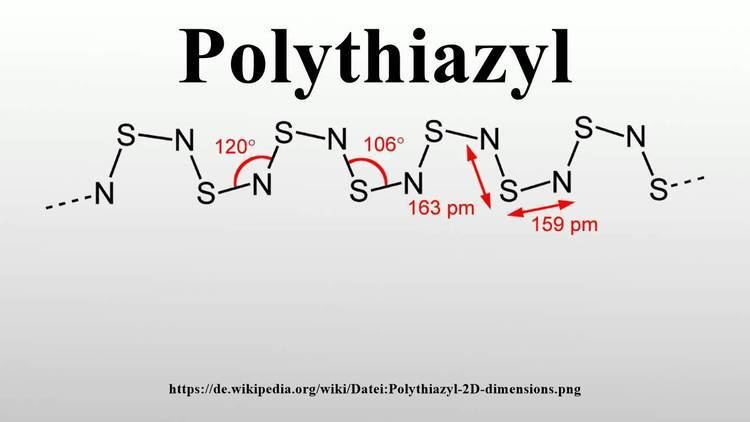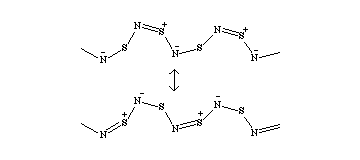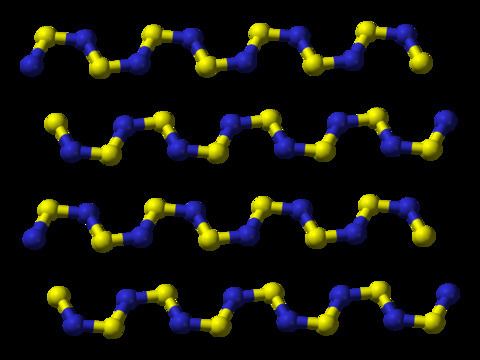Formula (SN)x | ||
 | ||
Appearance bronze colour, metallic lustre | ||
Polythiazyl
Polythiazyl (polymeric sulfur nitride), (SN)x, is an electrically conductive, gold- or bronze-colored polymer with metallic luster. It was the first conductive inorganic polymer discovered and was also found to be a superconductor at very low temperatures (below 0.26 K). It is a fibrous solid, described as "lustrous golden on the faces and dark blue-black", depending on the orientation of the sample. It is air stable and insoluble in all solvents.
Contents

How to pronounce polythiazyl
Structure and bonding

The material is a polymer. The S and N atoms on adjacent chains align. Several resonance structures can be written.
Synthesis

Polythiazyl is synthesized by the polymerization of the dimer disulfur dinitride (S2N2), which is in turn synthesized from the cyclic alternating tetramer tetrasulfur tetranitride (S4N4). Conversion from cyclic tetramer to dimer is catalysed with hot silver wool.
S4N4 + 8 Ag → 4 Ag2S + 2 N2S4N4 (w/ Ag2S catalyst) → 2 S2N2 (w/ 77K cold finger) → S2N2S2N2 (@ 0°C, sublimes to surface) → thermal polymerization → (SN)xUses
Due to its electrical conductivity, polythiazyl is used in LEDs, transistors, battery cathodes, and solar cells.


